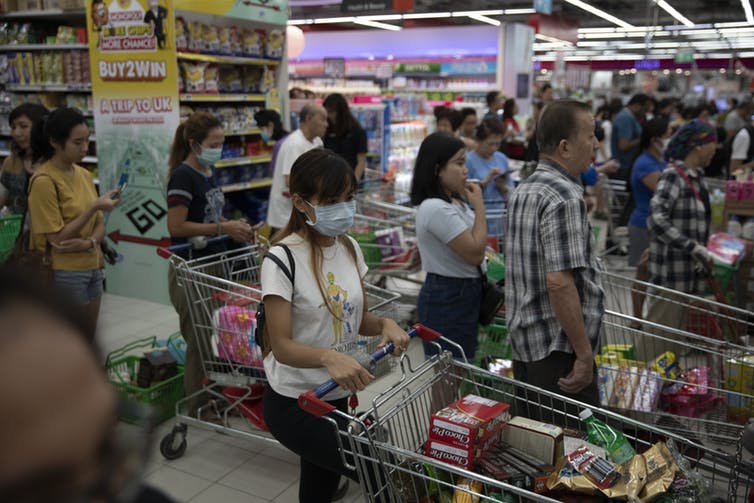The proliferation of fake news about the COVID-19 pandemic has been labelled a dangerous “infodemic”. Fake news spreads faster and more easily today through the internet, social media and instant messaging. These messages may contain useless, incorrect or even harmful information and advice, which can hamper the public health response and add to social disorder and division.
Confusingly some fake news also contains a mixture of correct information, which makes it difficult to spot what is true and accurate. Fake news may also be shared by trusted friends and family, including those who are doctors and nurses. They might not have read the full story before sharing or just glanced over it. Before you decide to share, make sure to read stories properly and follow some checks to determine the accuracy.
If the story appears to claim a much higher level of certainty in its advice and arguments than other stories, this is questionable. People will be seeking certainty in a time of high uncertainty, anxiety and panic. So it is only natural to more readily accept information that resolves, reassures and provides easy solutions – unfortunately, often in a false way.
Similarly, if a story is more surprising or upsetting than other stories it is worth double-checking, as fake news will try to grab your attention by being more exaggerated than real stories.
What to look out for
-
Source. Question the source. References have been made to “Taiwanese experts” or “Japanese doctors” or “Stanford University” during the outbreak. Check on official websites if stories are repeated there. If a source is “a friend of a friend”, this is a rumour unless you also know the person directly.
-
Logo: Check whether any organisation’s logo used in the message looks the same as on the official website.
-
Bad English: Credible journalists and organisations are less likely to make repeated spelling and grammar mistakes. Also, anything written entirely in capital letters or containing a lot of exclamation marks should raise your suspicions.
-
Pretend social media accounts: Some fake accounts mimic the real thing. For example, the unofficial Twitter handle @BBCNewsTonight, which was made to look like the legitimate @BBCNews account, shared a fake story about the actor Daniel Radcliffe testing positive for coronavirus. Media platforms try to remove or flag fake accounts and stories as well as verify real ones. Look out for what their policies are to try to do this.
-
Over-encouragement to share: Be wary if the message presses you to share – this is how viral messaging works.
-
Use fact-checking websites: Websites such as APFactCheck and Full Fact highlight common fake news stories. You can also use a search engine to look up the title of the article to see if it has been identified as fake news by the mainstream media.
Who to trust
The best sources to go to for health information about COVID-19 are your government health websites and the World Health Organization website. Primary sources are generally better than news articles.
Even government messaging and the mainstream media can get things wrong, but they are more trustworthy than unverified sources on social media and viral messaging. For instance, The Conversation is a more trusted source because all content is written by academics who are experts in their fields.

Charlatans have been promoting false preventions and cures for people to spend their money on. For example, the New York attorney general has had to send cease and desist notices for claims that toothpaste, dietary supplements and creams will prevent and cure COVID-19.
The effects can also be more serious than losing some cash. Iran has reported at least 44 people died from alcohol poisoning after drinking bootleg alcohol in a misguided attempt to cure COVID-19.
Unfortunately, the most basic and correct advice given so far does not offer a miracle or special insight. Wash your hands often (use hand sanitisers if you cannot), avoid touching your face, and sneeze or cough into the crook of your elbow or a tissue (and throw it away in a bag-lined bin). Avoid crowds and public places, keep a sensible distance from people, and do not travel unless absolutely necessary. Now many governments are introducing measures including travel bans and quarantines that need to be followed to protect the health of everyone, especially the most vulnerable.
We can all get caught out. Think twice about the messages currently circulating and help guide your family and friends to decide what to trust.
By Samantha Vanderslott, Postdoctoral Researcher in Social Sciences, University of Oxford. This article is republished from The Conversation under a Creative Commons license. Read the original article.
![]()